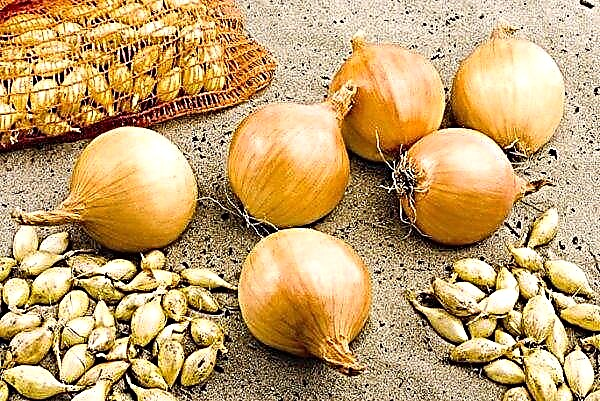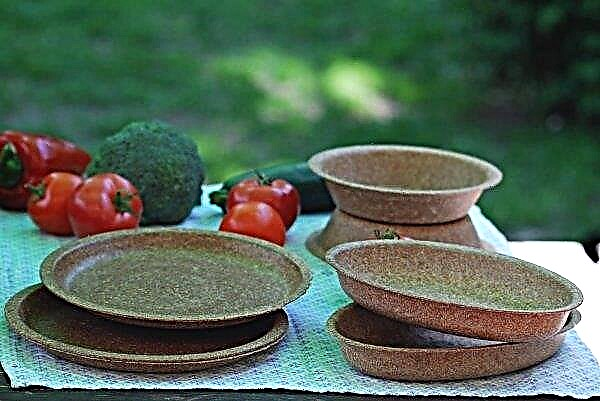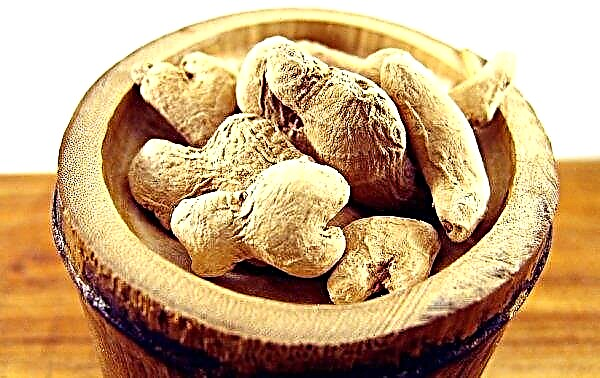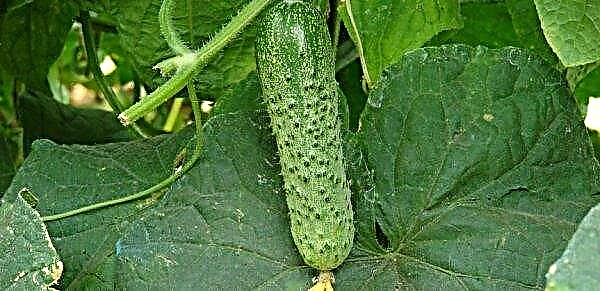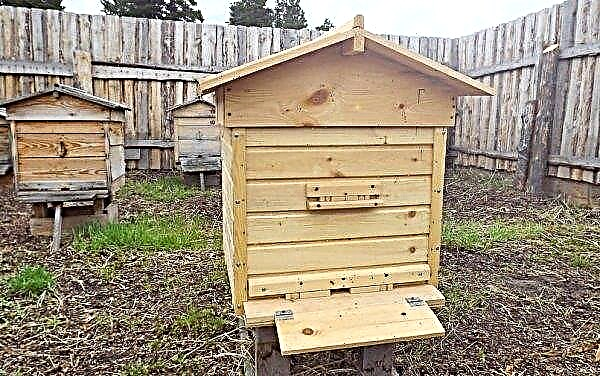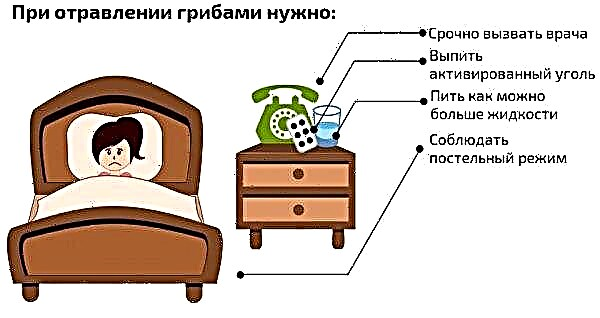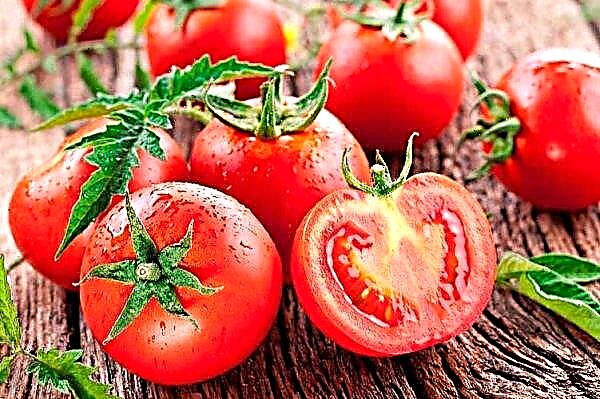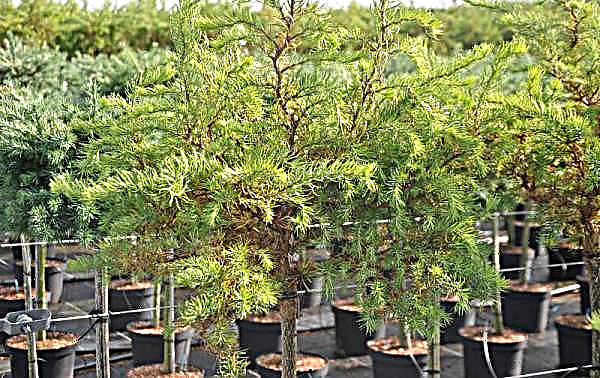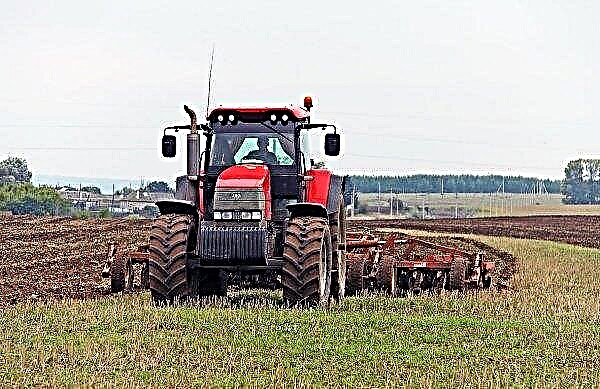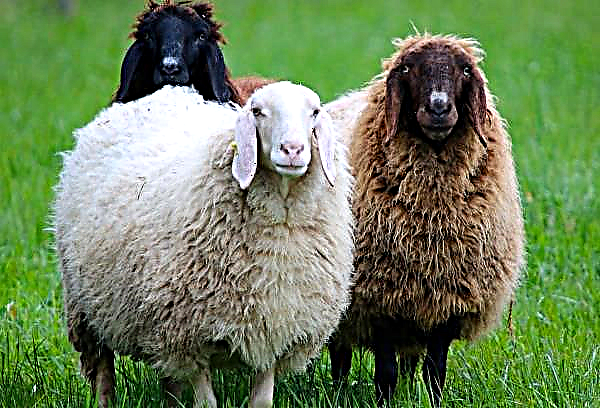Among the ornamental crops, there are plants with a thickened stem, which are called bottle ones. But the true bottle tree is the brachychiton plant. Its appearance, indeed, resembles a small bottle from which branches with carved foliage grow. The unpretentious and hardy tree has earned popularity among plant growers. And today we will talk more about brachychiton.
Description and features of indoor plants
Brachychiton (lat. - Brachychiton) is a tropical specimen belonging to the sterculia family. The plant was discovered in the 19th century by the German scientist Karl Schumann. It grows in nature in Australia, Asia and Oceania. The people called the tree a tree of happiness.
Brachychitones have such features:
- Deciduous and evergreen are found.
- They grow in the form of shrubs, shrubs and trees.
- In the wild, they grow up to 4 meters, and decorative ones have a height of only 50 cm.
- The base of the stem is 2–5 times thicker than the upper section.

Main parameters:
| Root system | Bizarrely confused. The roots are powerful, rod, often rise above the soil. |
| Stem | Light green, diameter - 15 m, height - 4-30 m. Surrounded by sprawling branches. Indoor species, including the maple leave, are much smaller. |
| Leaf shape | Oval, lanceolate, cordate, narrow gauge, deep lobed - depends on the variety. Leaves are planted on long petioles and covered with villi. |
| Leaf color | Green, bottom - white |
| Flower shape | 5-6-petal bells 1.5–2 cm in size. Combined into inflorescences of the “scutellum” type or racemiform panicles. |
| Flower color | Varied: plain, multicolor, with specks and patterns. |
Care and conditions for growing a house
Succulents and cacti are considered the most unpretentious domestic crops. Minimum conditions are required for them, simple care. And in the interior of the room there will be a plant with an original look.
Location selection
The flower feels good on the western or eastern window, it can also be placed on the southern side, but in this case, care should be taken that the rays of the burning sun do not fall on the tree. If brachychiton is located in the north, it will grow incorrectly and cease to develop due to a lack of light.

After wintering, a newly acquired plant and tree are allowed to get used to the bright light gradually.
Humidity and temperature
All types of brachychiton, including rock, love warmth. From spring to autumn, the temperature comfortable for them is +25 ... + 28 ° C. In winter, the flower requires a different mode - +10 ... + 16 ° C.
The dryness of the environment is detrimental to the bottle tree. In winter, it should be kept further away from heating appliances.
Important! Airing is necessary for brachychiton - he does not like stagnant air.
Lighting
The plant loves bright light, but direct sunlight should be avoided. If the tree is located on the northern windowsill, it will need additional lighting. This is especially true in the winter.

Land mixture and plant pot selection
A large capacity will be required to plant brachychiton, since the root system is quite ramified. The aerial part of the tree is heavier than the roots, so heavy clay pots are used for good stability.
The loose tree is suitable for the bottle tree, the composition of which can be varied:
- peat, deciduous humus, taken in equal amounts and two parts of river sand;
- turf, leaf earth, sand, humus, taken in equal parts;
- earth, sand and medium-sized gravel.
As a soil, a mixture for breeding cacti is also used. A drainage layer is placed at the bottom of the pot.

Watering and spraying
In the spring, summer and autumn periods of the year, the bottle tree is watered regularly. In the heat, watering is increased as the soil dries. It is watered with soft, settled, not cold water.
In winter, at lower temperatures, watering is reduced. Watering should be infrequent and make sure that the earthen lump does not sour.Did you know? Thickening on the brachychiton trunk is necessary to collect moisture for the period of no rain. This feature develops by the eighth year of life.
It does not need auxiliary moistening in the form of spraying.

Fertilizer
In warm time, the plant is fertilized every 20 days. For this, conventional dressing for indoor crops is suitable. During dormancy, the tree is not fertilized.
How to transplant and crop?
Mature trees are replanted as the roots grow. Once they have completely filled the pot, the plant is planted.

Young trees need to be replanted every spring, before the flowering period begins.
When moving to a new place, you can not deepen the roots, the plant is planted at the same depth at which it was before. The tree can be planted a little higher so that interwoven roots are visible.
To obtain a form, regular pruning is required (do it in the spring) and pinching of young shoots.Breeding methods
Brachychiton can be purchased at the store. In addition to the already formed trees, shortened cuttings are sold there (sometimes they can be confused with nolin) and seeds. The bottle tree is propagated by seed and vegetative methods.
It is more convenient to use the cuttings method. The apical shoots of an adult plant are cut so that there are at least three internodes on the trimmed cuttings. The shoots are dipped for several hours in a stimulating solution, and then planted in a soil-peat substrate and covered with a transparent jar. In such a “greenhouse”, cuttings are kept for several weeks until they have their own root system.
Did you know? Brachychiton rupestris (rock brachychiton) is a distant relative of coffee and cocoa.
The technology for growing brachychiton from seeds does not differ from the reproduction of other indoor plants. The seed material is soaked for a day in water and sown in a prepared substrate (the best option is a mixture of peat with volcanic material and sand).

To germinate seeds, a greenhouse environment is observed - temperatures below +23 ° C have a detrimental effect on seedlings.
Young seedlings germinate after 7-20 days and form slowly. At this time, they provide good watering and observe high humidity in the room.
Did you know? Translated from Greek, brachy means “short”, and chiton means “shirt”.
Dormancy and flowering features
Brachychiton blooms in summer. The process lasts 3 months. The flowering is plentiful, but its beginning depends on the type of plant. In some, this period begins immediately after the discharge of foliage, and in others - in the presence of leaves.

The flowers are small, up to two centimeters in diameter. After flowering, fruits are tied — pods 15–20 cm in size. The fruits contain seeds in the form of nut kernels covered with villi (tunic). Therefore, the species is called brachychiton.
The dormant period begins with falling leaves, closer to winter. It is not necessary to fight it - the tree must rest in order to bloom again.
It is impossible to water the plant abundantly during dormancy, this leads to decay of the root system and provokes porosity of the trunk. It is also necessary to reduce the temperature regime.
Growing difficulties
Unfortunately, brachychitone is susceptible to diseases and parasites.
Important! Brachychiton «does not tolerate» tobacco smoke. Therefore, in the room where the tree grows, it is better not to smoke.
Disease
The plant reacts negatively to some external stimuli.
Therefore, we will talk about the most common diseases:
- Dry spots on the foliage. They can talk about the lack of lighting. Exit - change the light mode.
- Burns on the leaves. Appear as a result of exposure to sunlight. Need to change the location of the pot.
- Decay. It occurs as a result of excessive watering. The solution is to reduce watering.

Pests
Brachychiton can affect:
- Whitefly Small white insects, a kind of small aphids. Larvae lay on the bottom of the leaf. Heavily infected leaves turn yellow and fall. It is difficult to deal with this pest. Processing is carried out every 10 days. Effective drugs: Pyrimifos-methyl, Pyrethrum, Permethrin, insecticidal soap, Resmetrin.
- Shield. It appears in the form of small brown plaques. More often traces are observed on the lower part of the foliage. From the sheet are separated heavily. If the pest settled on one leaf, it is better to remove this part of the plant. If there are already many shields, they are scraped off with a blunt edge of a knife. After that, the stems and foliage are wiped with a soap solution. If this does not help, use insecticides (insecticidal soap, Malathion, Pyrethrum, Permethrin).
- Spider mite. An invisible insect that forms colonies at the tops of shoots. It can be recognized by the presence of a thin cobweb on the underside of the foliage. It is immune to most chemicals. The affected parts of the plant are removed, and the tree itself is wrapped in a transparent film. At the first symptoms, brachychiton is treated with insecticides (Derris, Malathion, Permethrin). If the tree is seriously damaged, then it is destroyed.
Brachychiton is a fanciful unpretentious plant that will decorate any room. And with proper care and the manifestation of fantasy, a plant can be turned into an original tree.Important! A spider mite appears in an unfavorable environment. The main reasons are low humidity and poor ventilation.

